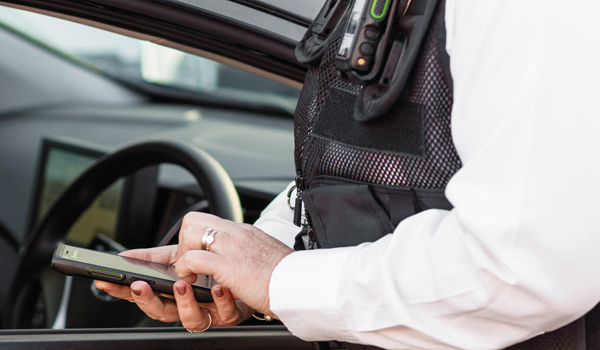High Velocity Human Factors: Factoring the human being into future police technology
A group of scientists and researchers are studying an aspect of human performance in mission-critical situations called High Velocity Human Factors, or HVHF, and it looks likely to be a key factor in the future of law enforcement.

A group of scientists and researchers are studying an aspect of human performance in mission-critical situations called High Velocity Human Factors, or HVHF, and it looks likely to be a key factor in the future of law enforcement.
High Velocity Human Factors (HVHF) is an emerging specialty within the discipline of human factors sciences/psychology and it will play an important role in the future of law enforcement.
Moin Rahman, a principal human factors researcher at Motorolas government and commercial sector, is responsible for developing solutions for mission-critical domains. He has been researching human performance, particularly critical and peak-moment performance, in mission-critical situations such as law enforcement and firefighting.
Mr Rahmans groundbreaking research in human factors resulted in his developing the new paradigm of HVHF to analyse human cognition and decision-making under extreme operational stress.
Human factors sciences studies human-machine (or human-systems) interactions in order to design machines and systems that are compatible with human capabilities and limitations.
The science combines and applies knowledge about human senses (vision, hearing, touch, etc.), cognition/thinking (memory, decision-making, etc.) and physiology (load bearing, force exerting capacity, etc.) to maximise the human-machine fit.
For example, human factors science research finds that the size of the text on a cell phone should be at least 2.5cm tall to be readable at arms length by a person with normal vision. Other applications include everything from the optimal placement/location/ size/form of control buttons on a kitchen oven to configuring the information displays inside the cockpit of an F-16 combat aircraft. The goal is to make the technology and the technology-user interface as sensible and easy to use as possible.
HVHF takes human factors sciences to a new level. According to a recent study by Mr Rahman in collaboration with Lt Col (retired) Dave Grossman, director of the Killology Research Group, and Dr Michael Asken, the psychologist for the Pennsylvania State Police, the purpose of HVHF is to address human behaviors, tendencies and ultimately performance in contexts like law enforcement.
In a technology report published last year A discourse of law enforcement psychobehaviors: Informing design from displays in ethology to high velocity human factors Mr Rahman said: The challenge is to maximise the role of the human agent in high stress situations that involve high stakes, physical danger, incomplete information and an unpredictable future. Whereas traditional human factors science looks at human performance in normal operating conditions (a state of equilibrium), HVHF studies human performance in chaotic and volatile conditions (a state of non-equilibrium).
HVHF is unique in that it integrates information from many different areas. Fields such as animal behavior, military psychology and cognitive, biological and neural sciences are integrated into HVHF to understand and maximise human responses in critical, high-stress situations.
Mr Rahman explains: Traditional human factors research often focuses on creating systems/machines that could be used by different types of users. An example is computers where Windows as an operating system made computers more understandable and usable for broader groups of the general population (home, business, school, etc.) than did the complicated DOS system. HVHF, on the other hand, addresses systems and machines for a single class of users usually in mission-critical domains where multiple and changing situations are often encountered, as are challenges with multiple and changing stressors that provoke intense emotional reactions.
For example, the police car of the future may have a digital dashboard to facilitate information in any form needed. In the situation of a car chase, the digital display may get rid of or hide irrelevant information (such as mileage,


